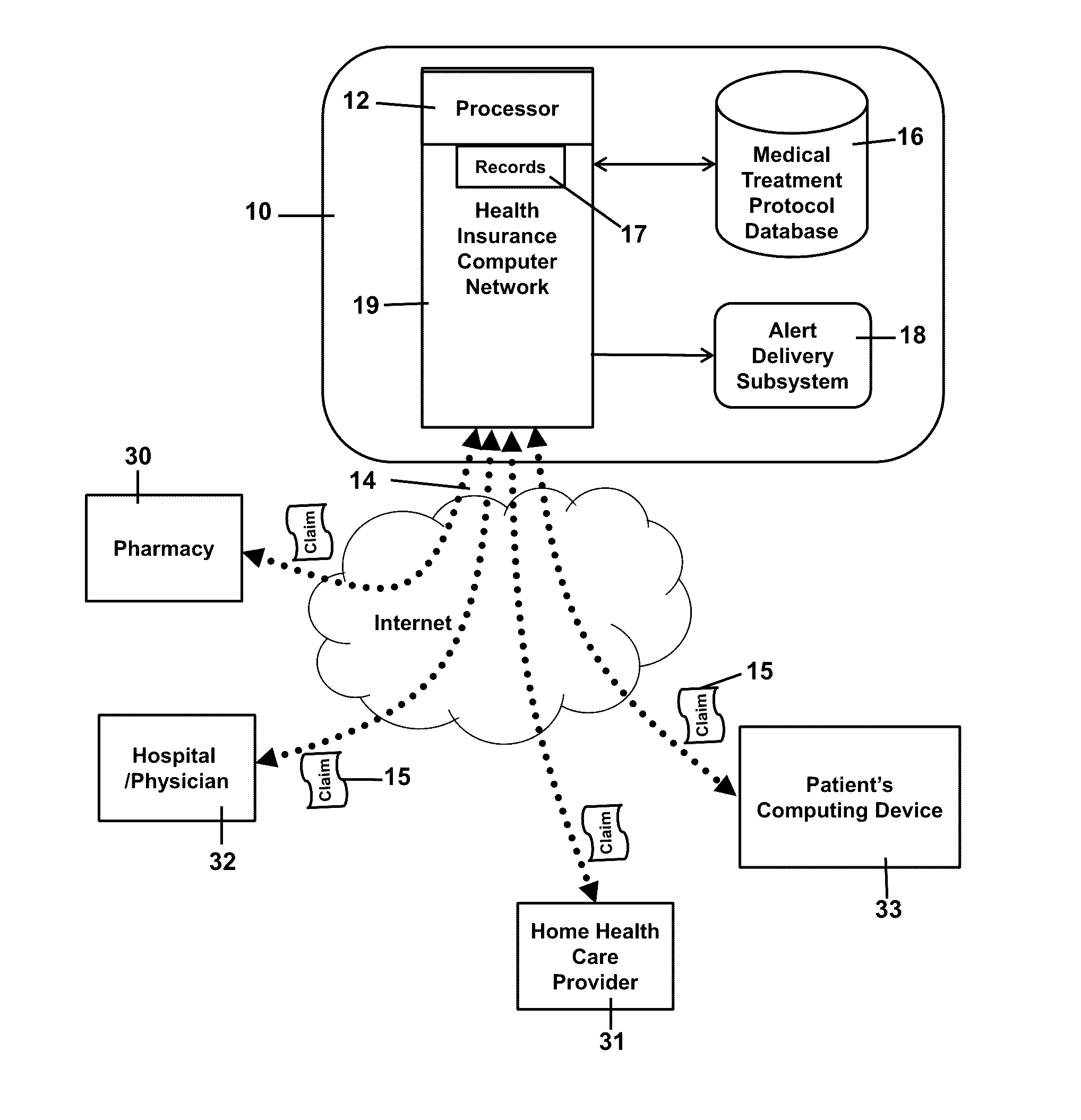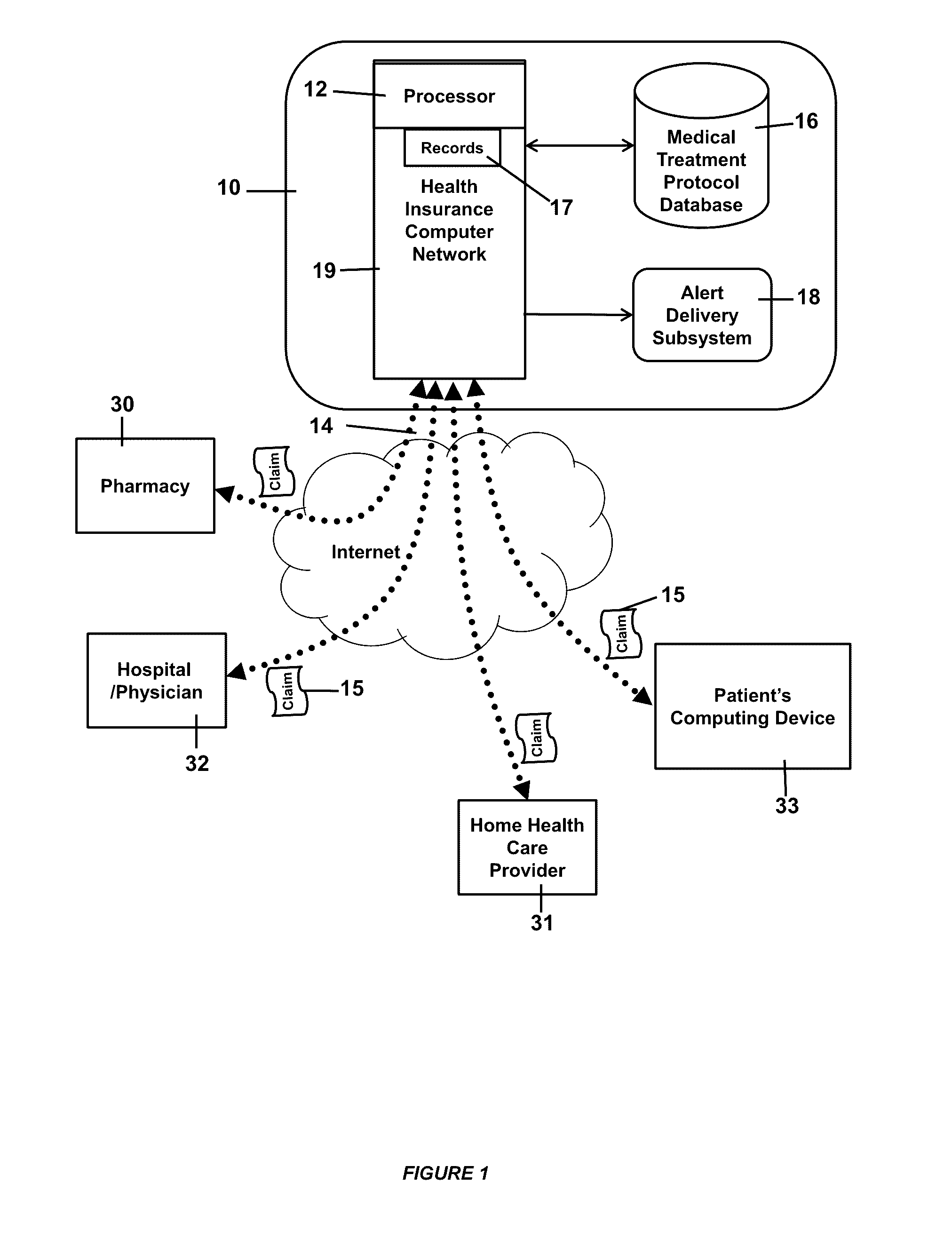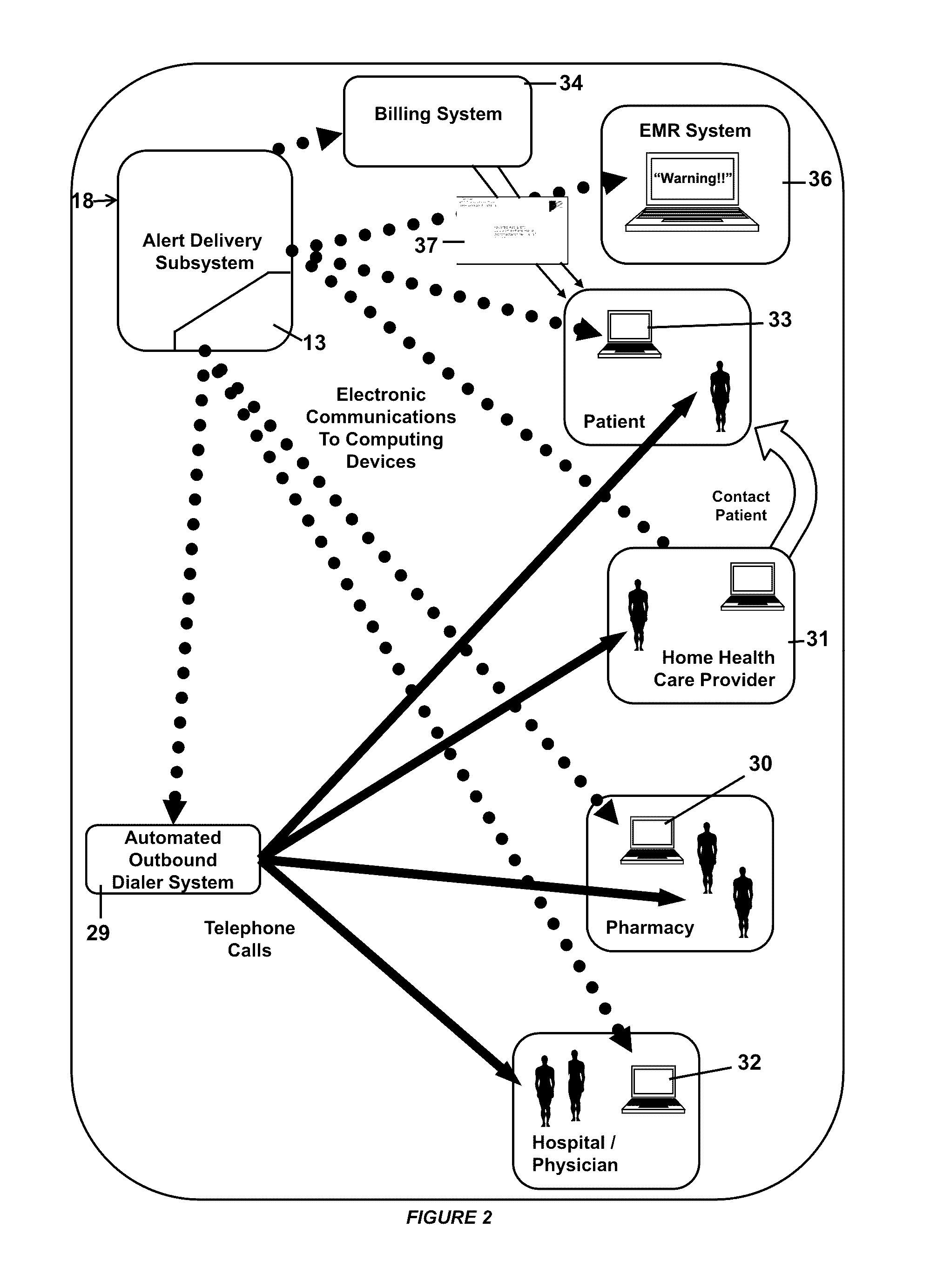System for gap in care alerts
a care alert and system technology, applied in the field of system for care alerts, can solve the problems of deteriorating patient health, affecting patient care quality, so as to improve the quality of care provided to patients, improve patient health, and reduce the impact of care gaps
- Summary
- Abstract
- Description
- Claims
- Application Information
AI Technical Summary
Benefits of technology
Problems solved by technology
Method used
Image
Examples
use case 1
[0060]
Member is currently eligible, and compliant with the rule.
Check 1—Will the member still be eligible by the end of the measurement year? (If they will they turn 76 by the end of the measurement year, then no Failure Date will be calculated.)
Check 2—Look for the LATEST service date of EACH of the tests which would satisfy the numerator, and add the appropriate test frequency. The Failure Date would be the latest of these dates. For example, if a member had an FOBT 11 months ago, and a colonoscopy 4 years ago, the Failure Date would be the 10th anniversary of the date of the Colonoscopy.
use case 2
[0061]
Check to see if the member's age is within one year of the required age, i.e. is the member currently aged 49? Will the member meet the age requirement by the end of the measurement year? If yes, note the date the member will meet the ‘age-in’ requirement.
Check to see if the member will meet the Coverage requirement by the end of the measurement year. If yes, note the date the member will meet the ‘coverage eligibility’ requirement.
If the member will be eligible before the end of the measurement year, look for the LATEST service date of EACH of the tests which would satisfy the numerator, and add the appropriate test frequency. The Failure Date would be the latest of these dates and the age-in and coverage-in dates above.
For example, if a member had never received any colorectal cancer screening, had been continuously eligible for 2 years, and will turn 50 between now and the end of the measurement year, the Failure Date is the date the member turns 50.[0062]1) Set the Failure...
PUM
 Login to View More
Login to View More Abstract
Description
Claims
Application Information
 Login to View More
Login to View More - R&D
- Intellectual Property
- Life Sciences
- Materials
- Tech Scout
- Unparalleled Data Quality
- Higher Quality Content
- 60% Fewer Hallucinations
Browse by: Latest US Patents, China's latest patents, Technical Efficacy Thesaurus, Application Domain, Technology Topic, Popular Technical Reports.
© 2025 PatSnap. All rights reserved.Legal|Privacy policy|Modern Slavery Act Transparency Statement|Sitemap|About US| Contact US: help@patsnap.com



